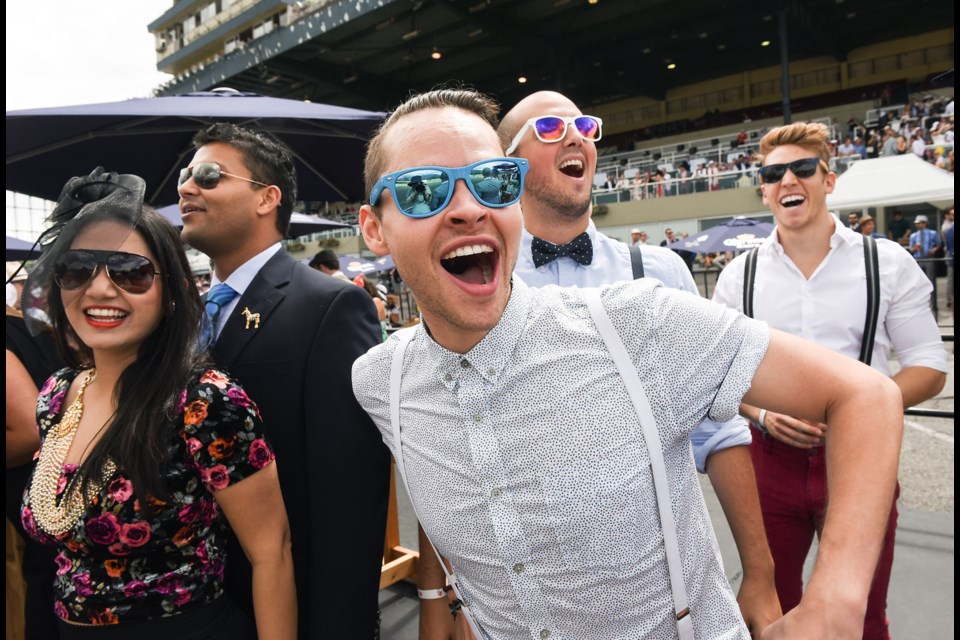As orchestra band Electric Monks started playing in the VIP area of the Deighton Cup, Jenny Burns stood on the nearby grassy hill that overlooked exotic cars lined up for show and the Hastings Racetrack where horses were being familiarized with the course before Saturday’s first race.
Burns fit in with the fancy dress crowd in her lovely aqua hat made by David Dunkley, who studied under the former milliner to Queen Elizabeth, and a beautiful full-length dress in a warm cream colour. She held a jeweled clutch purse, and as a nod to her equestrian background and not to a certain atrocious novel, a riding crop with a jeweled handle bought from an international lingerie chain.
The crop is a clue to the discovery that Burns isn’t one of the typical attendees of the seventh annual Deighton Cup in that she actually knows a thing or two about horses, and the sport.
“The betting is not a part of being here for me, I like to watch all the horses. I know it’s important for a lot of people and it is exciting, but I like to watch the condition of the horses, their muscles, how they’ve been trained,” said Burns. “All the horses have their individual personalities and every jockey has a different way of riding as well. Some horses like to be held back, some don’t so much but you won’t know that until you develop a relationship with the horse and that horse develops a relationship with you. It’s truly a team sport in a way that’s foreign to a lot of team sports — it’s a relationship with an animal.”
Burns, who flew out for the Deighton Cup from her home in Toronto, owns Chestnut Square stables in Nova Scotia with trainer Joshua Buchanan. While she has attended many races in her two decades of riding show jumpers, there are none in the country quite like the day at Hastings, which can add an extra element of surprise to the racing, she said.
“The interesting part is this can be quite spooky for the horses. You’ve got the cars here, got the tents here, got lots of people in crazy hats. You see these things at some races, but this is even more over the top so the jockeys will have to be a little more cognizant of the crowd,” she said. “There are a lot of distractions, many which you typically wouldn’t get a lot of races so the jockeys are thinking about it for sure and their place on the track will matter. You want to be on the inside of the track anyways because it’s the shortest distance but it’s also the furthest away from distractions. The jockeys that aren’t so lucky and aren’t so close to the rail will really have to be aware and focused because horses are very curious and they’re going to want to look. Especially the young ones, they really will!”
Race outcomes depend on a myriad of variables, which is why it was a huge deal when thoroughbred American Pharoah won the Belmont Stakes last month to take the Triple Crown. He was the first horse to win the title in 10 years, and only the 12th in history to prove the rarity of a consistent record in horse racing.
“I had one horse that would not jump on grass because it was too slippery, he just couldn’t handle it,” said Burns. “He would feel himself slide and that was it, he’d just stop before every jump. But he’ll jump on sand, he’ll jump on clay. If they’re uncomfortable, good luck making them do something they don’t want to do and that’s the same for racing, jumping, everything.”
Which, as long as you’re not financially invested, makes the sport so much fun.
“The jockeys have a game plan when they come out… But they often don’t get to stick to the game plan because something happens,” added Burns. “You have your favourites, of course, but there’s always an opportunity for an underdog or somebody else to come out and win. That’s why I love the sport so much, it’s never a sure thing.”



